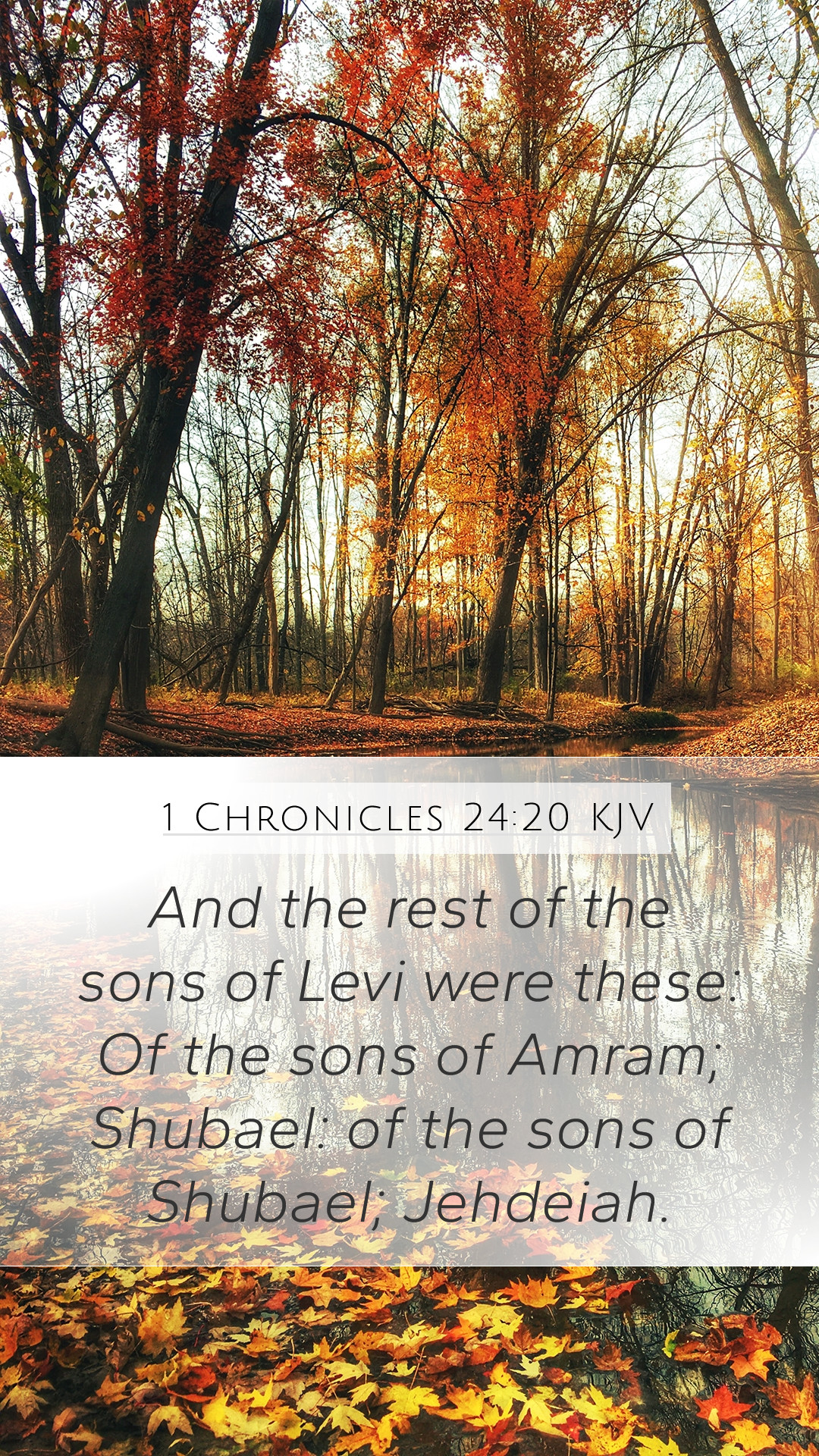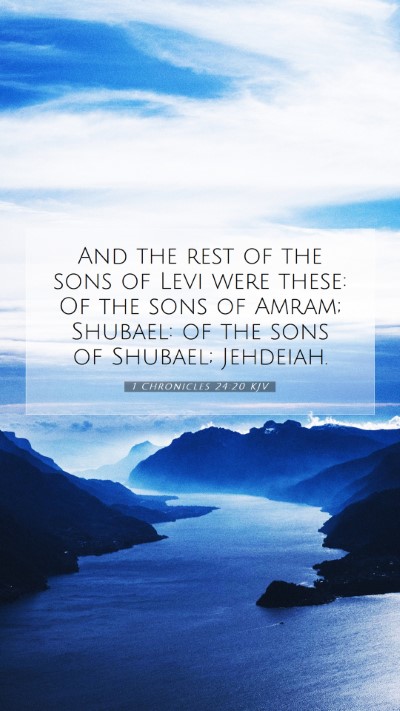Bible Verse Meaning: 1 Chronicles 24:20
Verse Text: "And of the rest of the sons of Levi were these. Of the sons of Amram; Shubael: of the sons of Shubael; Jehdeiah." (1 Chronicles 24:20)
This verse is situated within a larger section that outlines the division of the Levites, specifically detailing the lineages and the roles assigned to the descendants within the priestly service.
Contextual Overview
The Book of 1 Chronicles functions as a historical account that summarizes Israel's history, focusing particularly on the Davidic lineage and temple worship. It serves to remind the people of their heritage and the importance of proper worship practices.
In this chapter, David organizes the Levitical priests into different divisions, each with specific duties concerning the service of the temple. This structure reflects the importance of order and sanctity in worship, a theme prevalent throughout biblical texts.
Combined Insights from Public Domain Commentaries
This section consolidates interpretations from notable scholars:
- Matthew Henry: Henry emphasizes the significance of the family lines within the Levites, noting that organization in divine service was crucial for maintaining holiness. He highlights the necessity for clear roles and duties to prevent chaos during temple worship.
- Albert Barnes: Barnes elaborates on the structure of the Levitical system, pointing out that the descendants of Amram and Shubael are spotlighted as significant in the priestly hierarchy. He discusses how this lineage serves as a foundation for future priestly roles and underscores the importance of legacy in religious leadership.
- Adam Clarke: Clarke provides a detailed historical understanding, indicating that certain families had more prominent roles in the temple system based on their ancestry. He notes that the mention of Jehdeiah reflects an ongoing tradition of leadership amongst the Levites, establishing a notable heritage critical for the community’s spiritual stability.
Theological Insights
From the analysis above, several themes emerge that enhance the understanding of this verse:
- God's Order: The distribution of duties among the Levites symbolizes God's desire for order and structure in worship settings, showing that every individual and family has a role in the broader community of faith.
- Legacy and Heritage: The emphasis on genealogies not only establishes ownership of the priestly duties but also provides a connection to their forefathers, fostering a sense of identity and continuity within the faith community.
- Divine Service: This verse signifies a larger narrative concerning the necessity for specific family lines to manage holy responsibilities, reflecting God's sovereignty in appointing leaders and maintainers of worship.
Application of 1 Chronicles 24:20
For Christians today, this verse invites reflection on several applications:
- Understanding Our Roles: Just as the Levites had designated roles, believers are called to recognize their unique contributions within the body of Christ.
- Importance of Community: Emphasizing the significance of belonging to a community of faith can enhance engagement in local churches and fellowship.
- Embracing Heritage: Recognizing one’s spiritual heritage and being connected to the broader history of faith can strengthen one’s faith journey.
Cross-References
Related scriptures that illuminate the themes present in 1 Chronicles 24:20 include:
- Exodus 6:18-20: Details the families of the Levites, reinforcing their historical significance.
- Numbers 3:5-10: Describes the roles and responsibilities assigned to the Levites in service to the Lord.
- 1 Chronicles 23:24-32: Further outlines the organization of the Levites in service and worship.
Conclusion
Understanding the structured service of the Levites highlighted in 1 Chronicles 24:20 provides valuable insights into the nature of worship in the Old Testament. The organization not only served a functional purpose but was key to maintaining a respectful approach to divine service, reflecting themes of order, legacy, and community that resonate in contemporary faith practices. By studying this verse and its context, believers can appreciate the depth of biblical traditions and the lasting implications for worship and service today.


